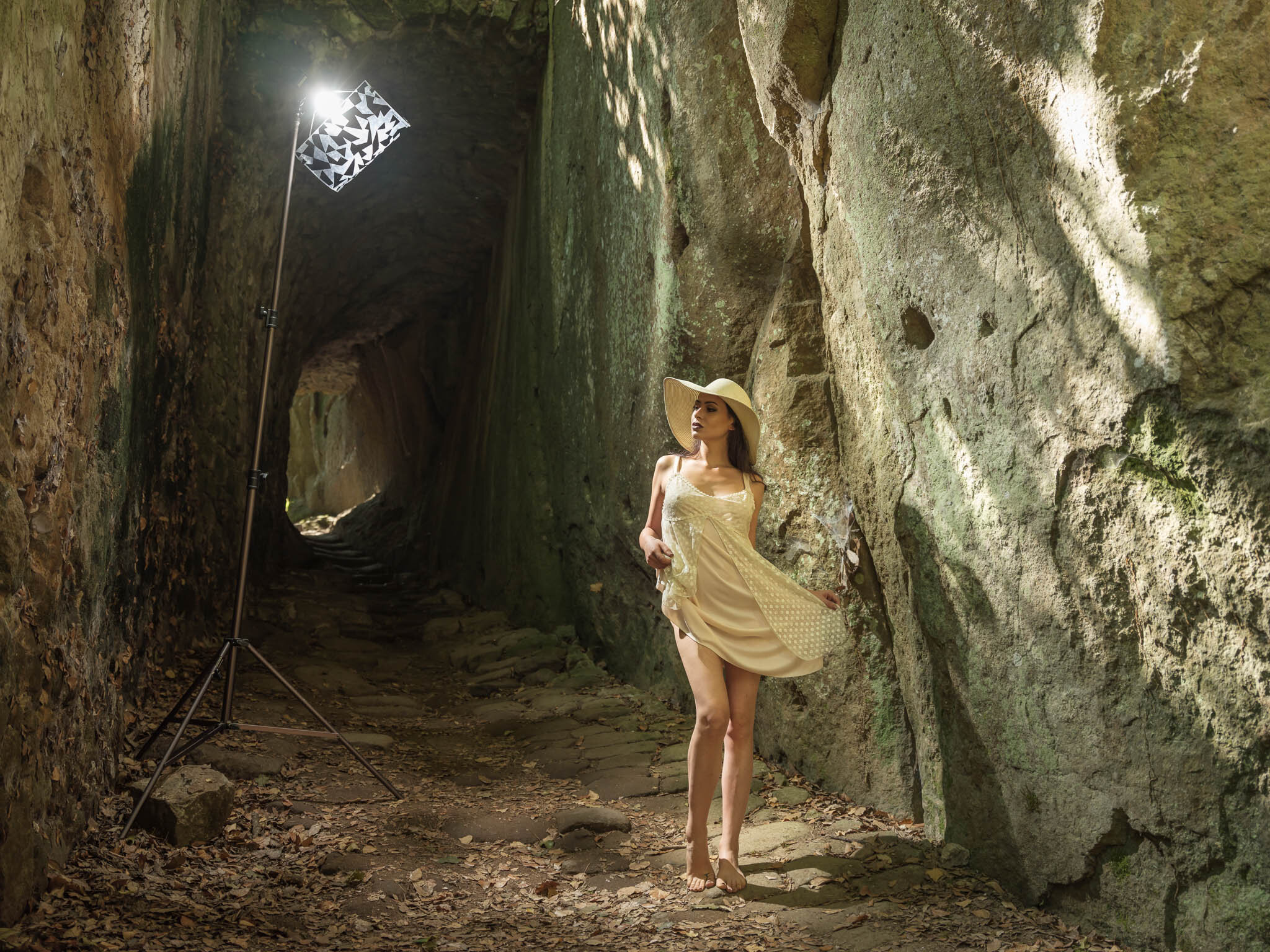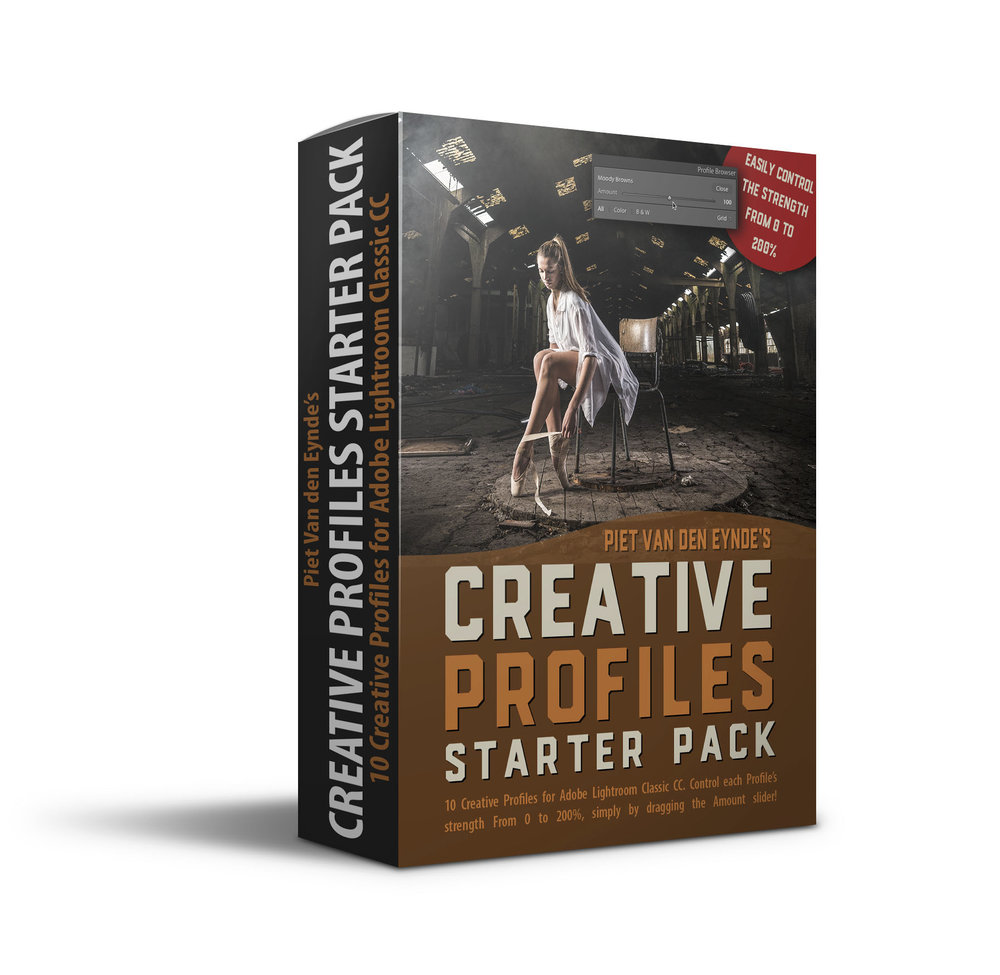This is the second part in a series of three guest posts in which my good friend and lighting wizard Damien Lovegrove deconstructs a number of his favourite images. If you find these blog posts inspiring, then make sure to sign up for next week’s two-part live online lecture, ‘Lovegrove Portraits Deconstructed, part III & IV’ that takes place on January 26 and 28, from 7 to 9 PM GMT. During those sessions, you’ll see and hear a lot more inspiring images and tips like these. Until January 21, you save 40 percent on the joint ticket price and pay only €30 for both sessions. Furthermore, every participant will receive a downloadable recording, so you can watch the sessions again as many times as you like, where you like and when you like! So even if you can’t make it to the live show, it’s still a good idea to book a spot!
The double exposure technique for when you can’t hide your light stand
Martina in an interesting location about an hour from Rome. Damien shot this on his 2020 road trip between the lockdowns.
Sometimes I struggle to get the flash where I need it in the shot without it being in the frame, so I use a double exposure technique. I always use a tripod for my camera so this technique is a piece of cake for me. I place the light where it needs to be and capture my moment. Once I have the energy and pose that I need I shoot my master frame. Then without moving the camera, I derive the light and shoot a frame without the flash using the same exposure settings. I then join the two shots in post production. The modifier you see in the shot is the Scatterflash which I also mentioned in the previous blog post.
Urbex with Martina
For this shot of Martina taken at an abandoned sugar factory in Italy also used a double exposure technique. This time though I used the more powerful Godox AD1200 Pro (editor’s note: here you can see Piet using the AD1200 Pro in Brussels) and a 70cm soft box and grid. Once I had the principal shot I took another without the flash and combined them.
You will notice that the sun is coming from a different direction to my flash light and this is quite deliberate. I had no intention of trying to make this shot look realistic. It is a stylised fashionable shot inspired by music album covers of the 1970s.
All these images were shot with a Fujifilm GFX 50S.










